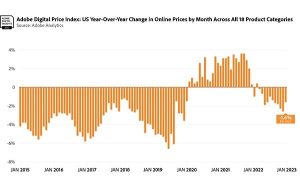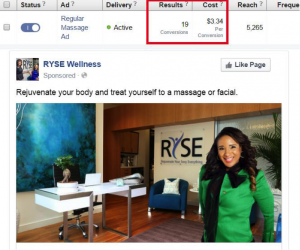Here’s how to craft compelling B2B case studies that resonate with decision-makers, blending narrative and data for maximum impact.
When your prospects are on the brink of decision-making in their buyer’s journey, a compelling case study can tip the scales in your favor. Because people, even corporate decision-makers, crave compelling stories.
Our brains are wired to connect with and remember stories. This is where case studies shine — as engaging narratives that showcase real solutions to real business challenges.
Let’s explore how to craft case studies that resonate deeply and authentically with those at the helm of corporate decisions.
The strategic role of case studies in B2B marketing
Case studies do one thing incredibly well — they show real, tangible results. While typical marketing speaks of what could be, case studies explain what has been.
The beauty of case studies lies in their versatility and ability to transform into articles, videos and infographics — whatever suits your audience best.
Here are three solid reasons why you should use case studies in your marketing:
- Influence decisions. Case studies sway purchase decisions. 42% of B2B buyers find them incredibly helpful in the early stages of shopping for a product or service. And by the middle stage, that number jumps to 62%.
- Drive engagement and sales. They’re persuasive tools that lead to higher engagement and more sales.
- Custom-fit. You can tailor case studies to speak directly to your ideal customers, making your message resonate more.
Mastering the art of storytelling in case studies
Crafting a compelling narrative in your case studies is about connecting with readers on a human level. The goal is to remind them that behind every business decision are real people with real challenges and desires. This human-to-human (H2H) approach transforms a standard case study into a relatable, engaging story that resonates with B2B buyers.
Setting the scene with empathy
Kick off your case study by immersing your audience in the client’s world. Pinpoint their critical challenge and explore the hurdles they encountered.
Case studies are about more than listing issues. Let your audience step into your client’s shoes. Paint a scenario that’s relatable and resonant.
When you detail these struggles, do it in a way that connects deeply with any reader in a similar bind. It’s about creating an informative, emotionally engaging and universally relatable narrative.
Crafting a narrative flow that engages
Your case study should flow smoothly from the problem to the solution and finally to the outcome. This journey should be clear and logical.
Guide the reader through each step of the process — weaving a story that leads to a “better day.” This approach keeps the reader engaged, making the case study more relatable and easier to follow.
Blending narrative with hard data for impactful storytelling
When crafting a case study, the fusion of a compelling narrative with concrete metrics is essential. Real-world customer data validates your story and provides tangible evidence of your solution’s impact.
Up to 76% of SaaS marketers include key metrics in their case studies. Why? Because specifics like time saved and revenue increased speak volumes. To create a case study that truly resonates, consider these actionable steps:
- Focus on key metrics. Identify and highlight metrics directly related to the client’s success story. This could be time saved, revenue increased, productivity improved or customer satisfaction rates. These figures offer a quantifiable measure of your solution’s effectiveness.
- Integrate data into the narrative. Weave these metrics seamlessly into your story. Instead of simply presenting numbers, explain how these figures translated into real benefits for the client. For example, a 30% increase in revenue could be framed within the context of how it enabled business expansion or investment in new areas.
- Use visuals to emphasize data. Incorporate graphs, charts and infographics to represent these metrics visually. Visual aids can make complex data more digestible and memorable, reinforcing the narrative of your case study.
Emotional connection beyond logic and ROI
While B2B is often driven by logic and ROI, the human element should not be overlooked.
- How did your solution impact the people involved?
- Did it simplify their work processes, reduce stress or improve team morale?
These details bring your story to life, showcasing the success of a solution and its real-world impact on individuals.
Highlighting learning points with a personal touch
End your case study by highlighting the key takeaways or learnings from the experience.
- What makes your approach unique?
- How did it change the client’s day-to-day operations for the better?
Most importantly, tie these learnings to the reader’s context, subtly hinting at how your service can transform their situation.
Guiding the next steps
Finish with a compelling call to action. After taking the reader on a journey, guide them toward the next step. Whether contacting your team, downloading a whitepaper or signing up for a demo, the call to action (CTA) should be clear and relevant, offering them a pathway to their “better day.”
Remember, a well-told story in a case study connects, engages and inspires action. By adopting this narrative-driven approach, your case studies can become powerful tools in your marketing arsenal, striking the perfect balance between professional solutions and personal impact.
Selecting the right success stories
Choosing the right customer stories to feature in your case studies is critical. Your selected stories should showcase your successes and resonate with your target audience. Here’s how to pick the right ones:
Alignment with the target audience
- Identify common challenges. Look for stories that address challenges commonly faced by your target audience. This increases the relatability and relevance of the case study.
- Representative solutions. Choose stories where your solution closely aligns with what your prospects are seeking. Highlighting a variety of use cases can showcase the versatility of your offerings.
Embracing diversity in case studies
- Wide range of industries. Including success stories from various industries can broaden your appeal and demonstrate the universal applicability of your solutions.
- Different company sizes. Featuring both small businesses and large enterprises can help prospects see that your solutions are scalable and adaptable.
- Global reach. If applicable, include case studies from different geographical locations to appeal to a global audience.
Maximizing the reach of your case studies
Once your compelling case studies are ready, the journey to make them known begins. It’s about more than creating great content — it’s about ensuring it finds its way to the right audience at the right time through the right channels. Think of this as a strategic distribution campaign where every element amplifies your message.
Using multi-channel promotion for effective outreach
The key is not to put all your eggs in one basket. Effective promotion of your case studies requires a multi-channel approach that captures interest and drives action. Here’s how to make it impactful:
- Leverage social media for teasers and engagement. Use social media to spark curiosity about your case studies. Share compelling snippets, key facts or intriguing insights that invite your audience to explore the full story. This approach increases engagement and directs traffic to your website.
- Utilize blogging and guest posting for depth and authority. Expand on the narrative of your case studies through blogging and guest posting. Offer deeper insights or additional context that complements the main story. Including links back to the full case study boosts website traffic and reinforces your position as an industry thought leader.
- Harness targeted email campaigns for personalized outreach. Segment your email audience and tailor content to match their specific interests. A personalized approach in email campaigns ensures your case studies resonate more meaningfully with different segments of your audience.
Adapting to different formats for wider engagement
To maximize the impact of your case studies, it’s essential to cater to different learning styles and preferences. By diversifying the format of your case studies, you can engage a broader audience and drive more sales.
Here’s how to adapt your case studies into three effective formats:
Video case studies
Video brings your success stories to life with engaging visuals and sound, making them perfect for sharing on social media platforms, your website and email or newsletter campaigns. They offer an immersive experience, allowing viewers to see and hear firsthand accounts of your product’s impact.
One-page infographic
Infographics provide a concise, visually appealing way to convey the essence of your case studies. They’re perfect for viewers who want a quick yet informative overview. This format distills your case study into essential points and statistics, complemented by engaging graphics.
While they might be screen-sized or slightly longer, infographics are designed to walk the audience through key pain points and achievements in an easily digestible manner, making them ideal for social media shares and quick online consumption.
Ebook format
Ebooks offer a more comprehensive dive into your case studies. They allow you to provide detailed background information about your client, their chosen solutions and in-depth data on how your company addressed challenges.
Ebooks are the perfect format for readers who seek a thorough understanding and are likely to share this information with decision-makers in their organization.
Bring your efforts together on the case study landing page
Maximize the impact of your case studies by featuring all three formats — video, infographic and ebook — on a dedicated landing page on your website. This ensures accessibility for various types of learners and increases the likelihood of deeper engagement.
Hosting your case studies on a landing page drives sales, boosts SEO and acts as a powerful lead magnet. Include a contact form with a strong CTA to capture the interest of potential clients.
This is particularly effective in B2B settings where purchasing decisions involve multiple stakeholders. A single landing page with diverse case study formats can be a decisive factor in swaying the buying committee in your favor.
Elevating B2B sales with compelling case studies
Case studies are much more than another item in the marketing toolkit. More than stories, they prove that your solutions work in the real world.
After crafting these stories, get them out there, analyze their performance and fine-tune your approach based on your learning. This turns good case studies into great ones, setting your business apart.
In an environment overflowing with options, a solid case study can be the nudge that swings the pendulum your way.
The post How to create case studies that sway B2B decision-makers appeared first on MarTech.
MarTech(1)





